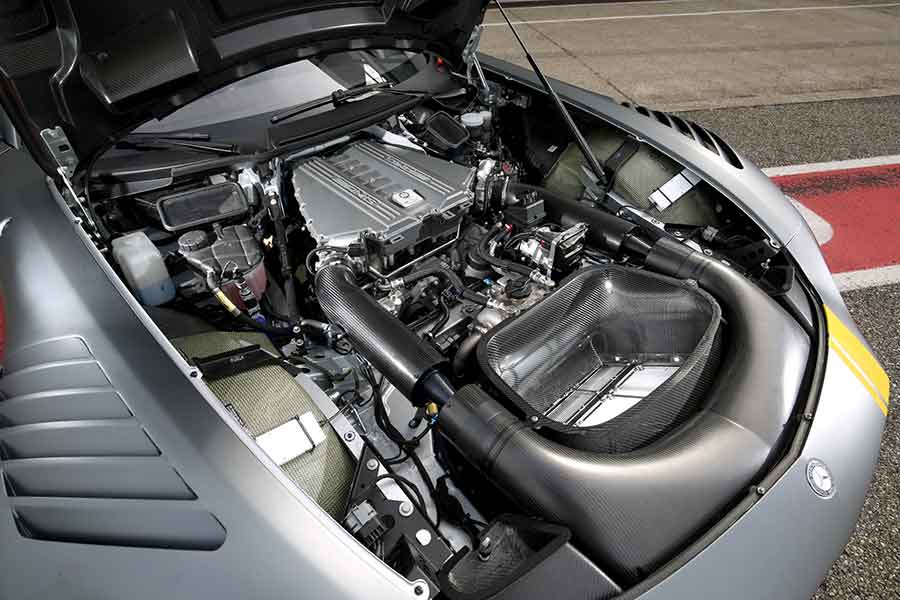Mercedes-AMG GT3
Mercedes-AMG GT3 is the latest GT3 specificated racing car released in 2016 and prepared to conquer the tracks all around the world in the various racing series.
‘The Beast’ – wild and powerful
The car was presented in March of 2015 at Geneva Motor Show and was projected as a successor of Mercedes-Benz SLS AMG. The car is produced in the factory in Sindelfingen as a road car. After a while, it was shipped to the factory in Affalterbach. Every race car must meet FIA GT3 specifications before any kind of approval.

Mercedes-AMG GT3 was presented at Geneva Motor Show in 2015
Mercedes-AMG GT3 immediately got the nickname ’The Beast’. And this car is really the beast on the track. This car looks mighty and pretty wild, with huge power. The aim of Mercedes was to systematically continue its expanding in motorsport presence and to leave a deep mark with its intelligent vehicle concept.
Based on the road Mercedes-AMG GT
The standard Mercedes-AMG GT provides the ideal prerequisites for the GT3 racing model, with its low centre of gravity, perfect distribution of weight, and other characteristics necessary for the successful racing car. The widened body, the large air intakes, the diffuser and the huge rear aerofoil all signalise a desire to attack and all the modifications have been made to maximise the power output and aerodynamic performance.

Mercedes-AMG GT3
The safety is also at the highest level. The driver is protected with the resilient carbon fibre seat pan and an integral roll-over cage made from high-tensile steel. Many parts of the body, like the engine cover, front wing, side skirts or the doors are made from the strengthened carbon-fibre in order to reduce the weight of the car.
Engine is the key to the success
Mercedes-AMG GT3 has a powerful V8 6.3 litre engine taken from its predecessor Mercedes SLS AMG GT3. It was done like that to reduce operating costs of the customer teams even though the road car’s turbocharged 4.0-litre engine is probably more suitable for this model. However, the old engine proved to be the strongest part of the SLS and luckily the teams and the drivers never complained about it and it remained unchanged until its first use back in 2011.

Engine is the same like in Mercedes SLS AMG
The six-speed sequential gearbox is mounted in a transaxle configuration on the rear axle. The double-wishbone suspension is made almost entirely from aluminium which shows the connection between regular production technology and a racing technology
Teams had to splash the cash for the success
Mercedes-AMG sells this car to customer teams for the sum of €372.000, so it is not so easy to minimise initial and operating costs. However, almost every team that used SLS decided to continue with Mercedes-AMG GT3 and the results for the rookie season are pretty good in both sprint and endurance racing.

Mercedes-AMG GT3 at Nurburgring
Many teams competing in the Blancpain GT Series are using Mercedes-AMG GT3, as well as the teams from ADAC GT Masters and other racing series worldwide. One of the biggest successes so far was the epic 1-2-3-4 triumph in 24 Hours of Nurburgring, one of the most prestigious races in the world. Considering the results achieved in 2016, there will be a lot more to come from Mercedes-AMG GT3.
Technical specifications
Engine
V8 front mid-engine
DOHC
4 valves per cylinder
Race power approx: 500 Hp
Max torque approx: 600 Nm
Displacement: 6208 ccm
Power/Weight ratio: 2,68 kg / Hp
Fuel Tank Capacity: 120L
Transmission
Rear wheel drive
Six-speed sequential transmission in transaxle configuration with multi-disc, limited-slip differential and traction control
Bodywork
Material of Chassis: Aluminium
Length: 4710mm
Width: 1990mm
Height: 1195mm
Weight: 1320 kg
Suspension
Adjustable suspension with double wishbones front and rear and modified axlekinematics
Tyres
Front: 300/68 – 18”
Back: 310/71 – 18”
Photo: caradvice.com.au carscoops.com automobilemag.com motortrend.com youtube.com




